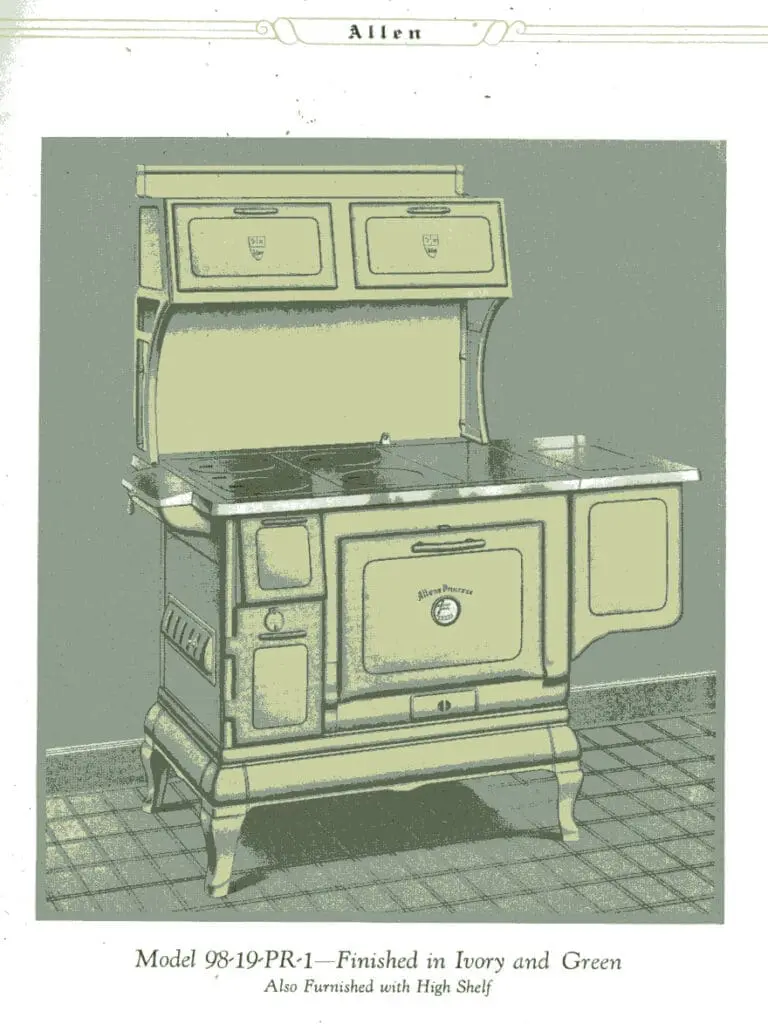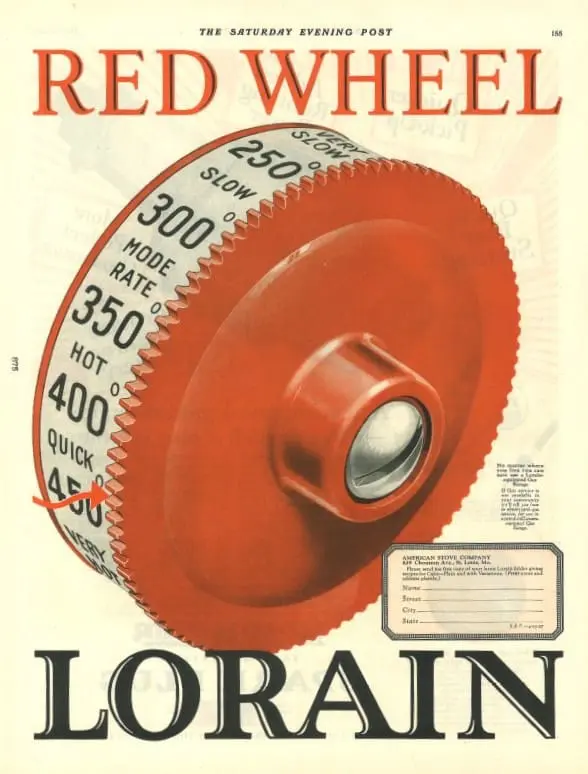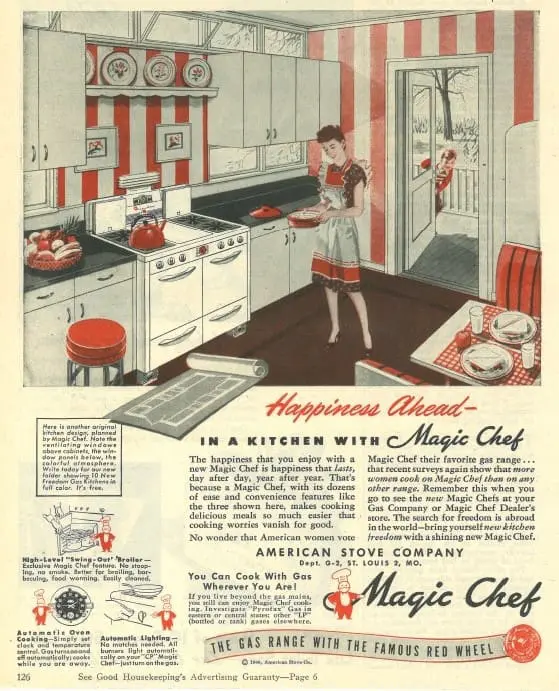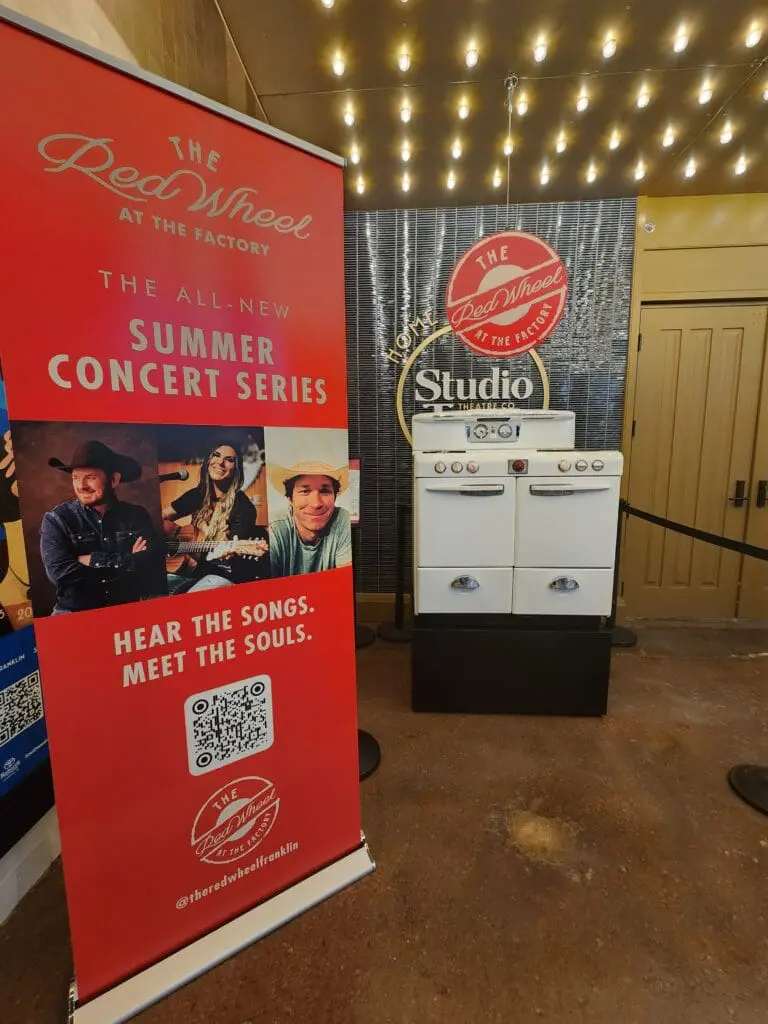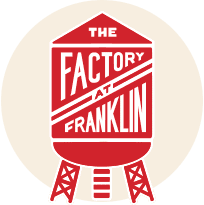You have likely heard about The Red Wheel at The Factory lately – maybe you attended a vibey in-the-round performance in Turner Theater or walked past the charming mid-century stove in the lobby – and now you have to know: where does the Red Wheel come from?
The vibrant name of our summer songwriter concert series draws its origin from the Magic Chef days of The Factory, when their iconic red wheel symbolized innovation, modernity, and the best of home cooking technology.
Before this red wheel took center stage for the first time, most home cooks were crafting meals on the same ranges they’d grown up on: cast-iron monoliths that stood the test of time and certainly beat stirring a pot over an open fireplace. These ranges, some of which were produced here at The Factory under Allen Manufacturing Company and Dortch Stove Works, improved cooking conditions and created new possibilities for generations of chefs; however, there was still room for improvement.
Cast-iron, while excellent for building and retaining heat to bake the perfect loaf of bread, also radiates heat outwards. This was ideal in the winter, not so much in the middle of a blazing summer. Prior to enameling, ranges had to be wiped down and cleaned out after every use to prevent rusting. The temperamental nature of cooking with fire meant chefs spent hours in the kitchen tending to a flame that, regardless of the sharpness of the eyes watching it, still fluctuated frequently, resulting in uneven cooking. Chefs had to develop an almost intuitive understanding of the individual quirks of their ovens to achieve any regularity between bakes.
Suffice to say, cooks were ready for a change, but the arrival of the gas range was met with a lukewarm reception. Advertisers had endless product features to build buzz around. The gas range was smaller, its enameled body easier to clean; the art-forward design appealed to modern aesthetics, and it kept food warm but the kitchen cool, all while providing considerable time savings. Despite these obvious benefits, safety risks posed by the new fuel source and the swift improvement of protypes that forced new models into obsolescence almost as soon as they hit the market waylaid early acceptance of the gas range. Sales departments and marketing firms struggled to convince families to take a chance on this new technology.
Then, the Red Wheel.
Originating in Lorain, Ohio, under the auspices of the American Stove Company (soon to be known as Magic Chef), the first thermostatically controlled oven regulator hit the market in 1915. The Lorain Red Wheel was featured on a new line of ranges that promised to solve the problems of the past and present with the simple twist of a dial. With gas flow monitored by a thermostat to prevent unexpected fluctuations, Lorain-equipped ranges could promise a perfect, consistent cook every time. Now, the chef could pop a roast in the oven, set the temperature to 400 degrees, and walk away! Amazing!
There was one hiccup. Home cooks who had developed an instinctive understanding of their ranges, had only a passing familiarity with temperature when it came to cooking. Sure, they’d check the porch thermometer to see if they needed a jacket but given the mercurial nature of cooking with fire and the subtle variations from stove to stove, recipes were developed over generations with general terms that could be adapted to the individual’s oven. You might put a roast in on a “slow cook” or bake a dish in a “hot oven”, but inserting 375 degrees into a recipe was about as helpful as providing the instructions in another language.
The American Stove Company, soon to be Magic Chef Inc., was quick to address the issue. First, the dial. To help cooks build familiarity with this new method of cooking, designers included traditional cooking terms alongside the temperatures on the dial itself. Instruction manuals included test recipes to walk the cook through the new technology. Charts in the back helped cooks keep track of different recipes, the temperatures they’d used, and the adjustments that led to the best results. Stores offered demonstrations with the promise of a good meal and a discount on the purchase of a new gas range for those who attended.
The addition of these features finally opened the door, and before long Magic Chef and their red wheel had become household names, synonymous with quality, modernization, and the cutting edge. Advertisements encouraged savvy buyers to look for the iconic Red Wheel to ensure a perfect cook every time. Gas ranges rose in popularity and designs evolved to reflect ever-changing trends, incorporating a host of delightful features that avid advocates acclaim to this day.
Today, one such range can be found outside of Turner Theater. A little Magic Chef waits to show off the swing out broiler, the built-in recipe cheat-sheet, and of course the iconic Red Wheel oven dial resting in pride of place. Above it, our take on this symbol of innovation promises the discerning music-lover an evening of good times and great tunes, so keep your eye out for that Red Wheel and swing by for the perfect night, every time.
